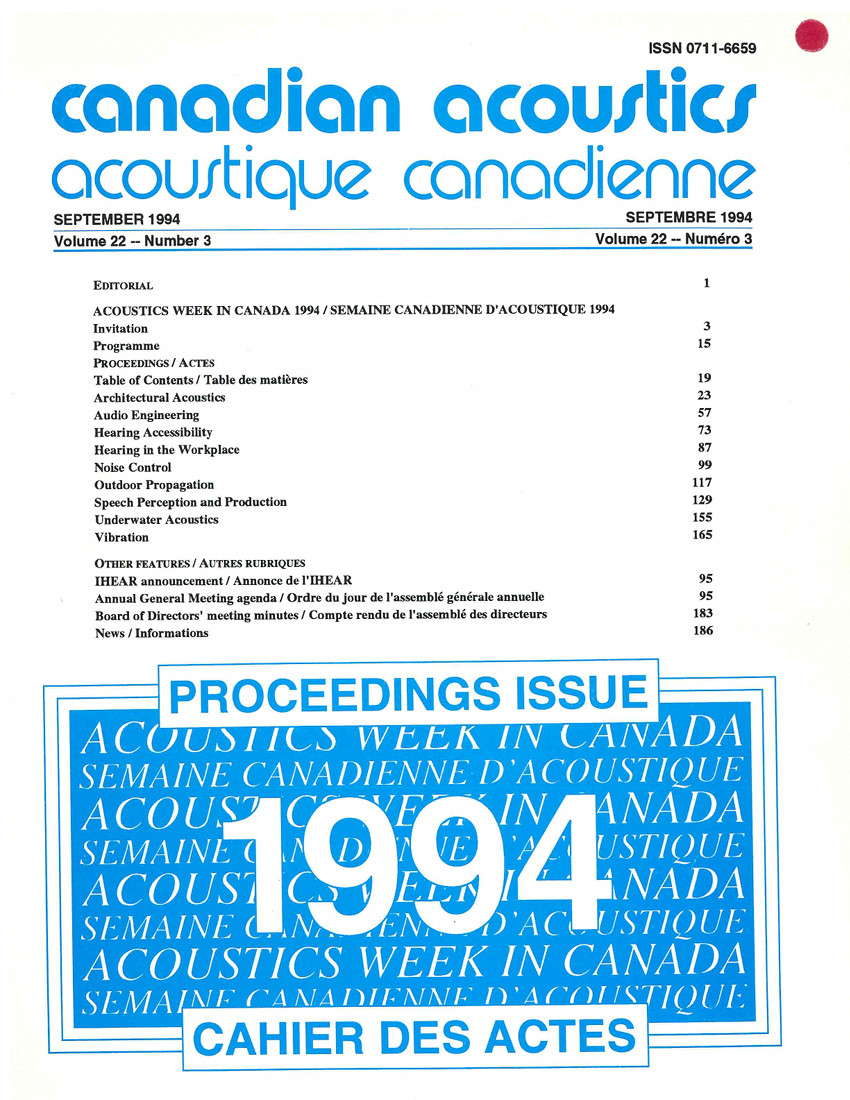Validation of masked threshold predictions among people with sensorineural hearing loss
Keywords:
hearing, masked threshold predictions, sensorineural hearing loss, signal-to-noise ratios, auditory warning signal detection, ambiant noiseAbstract
Auditory capacities are a given. This situation calls for efforts to adapt the work environment to the prevailing residual capacities of workers with a hearing impairment. Noise reduction is of course the first step required in order to improve signal-to-noise ratios. However, in many cases, these steps will not be sufficient to prevent performance impairment among workers with a hearing loss. Specific procedures for job accommodation are warrented. With respect to auditory warning signal detection, given a certain ambiant noise, one needs to predict the signal level at a given frequency that will meet the individual's detection capacity. Previous work has been done to adapt a laboratory procedure for measuring frequency selectivity to the constraint of a clinical test, and also to adapt Detectsound to individual rather than statistical predictions of masked thresholds. The present investigation aimed at validating such predictions among people with various degrees and configurations of sensorineural hearing lossAdditional Files
Published
How to Cite
Issue
Section
License
Author Licensing Addendum
This Licensing Addendum ("Addendum") is entered into between the undersigned Author(s) and Canadian Acoustics journal published by the Canadian Acoustical Association (hereinafter referred to as the "Publisher"). The Author(s) and the Publisher agree as follows:
-
Retained Rights: The Author(s) retain(s) the following rights:
- The right to reproduce, distribute, and publicly display the Work on the Author's personal website or the website of the Author's institution.
- The right to use the Work in the Author's teaching activities and presentations.
- The right to include the Work in a compilation for the Author's personal use, not for sale.
-
Grant of License: The Author(s) grant(s) to the Publisher a worldwide exclusive license to publish, reproduce, distribute, and display the Work in Canadian Acoustics and any other formats and media deemed appropriate by the Publisher.
-
Attribution: The Publisher agrees to include proper attribution to the Author(s) in all publications and reproductions of the Work.
-
No Conflict: This Addendum is intended to be in harmony with, and not in conflict with, the terms and conditions of the original agreement entered into between the Author(s) and the Publisher.
-
Copyright Clause: Copyright on articles is held by the Author(s). The corresponding Author has the right to grant on behalf of all Authors and does grant on behalf of all Authors, a worldwide exclusive license to the Publisher and its licensees in perpetuity, in all forms, formats, and media (whether known now or created in the future), including but not limited to the rights to publish, reproduce, distribute, display, store, translate, create adaptations, reprints, include within collections, and create summaries, extracts, and/or abstracts of the Contribution.


